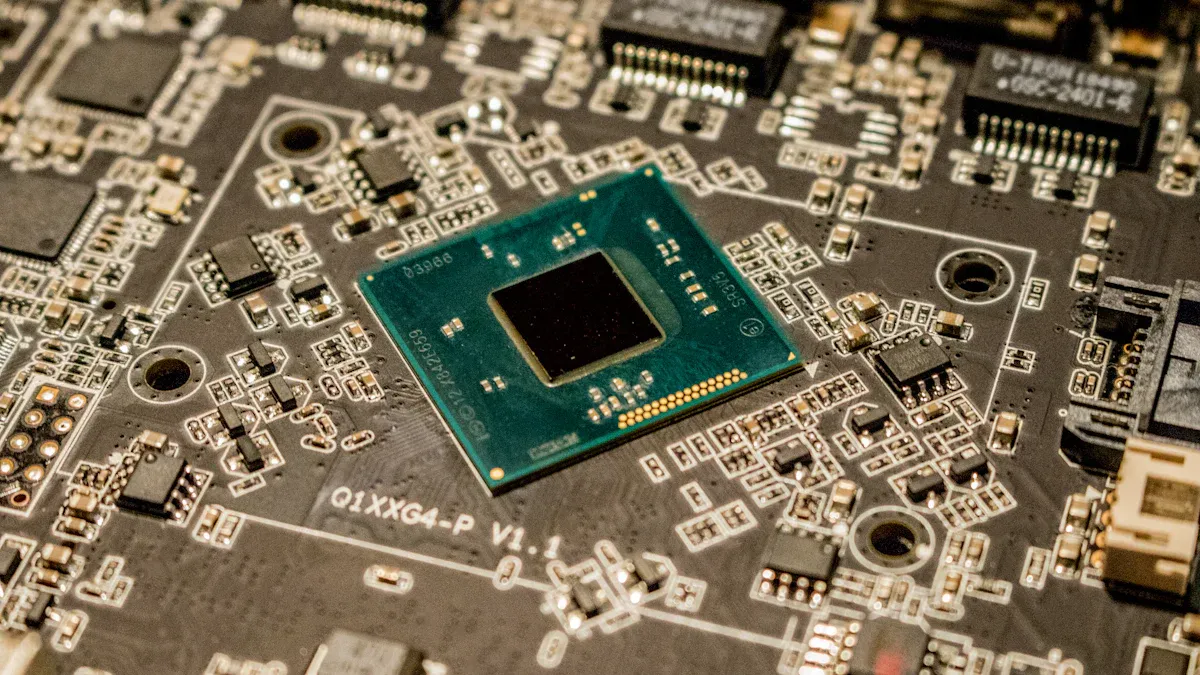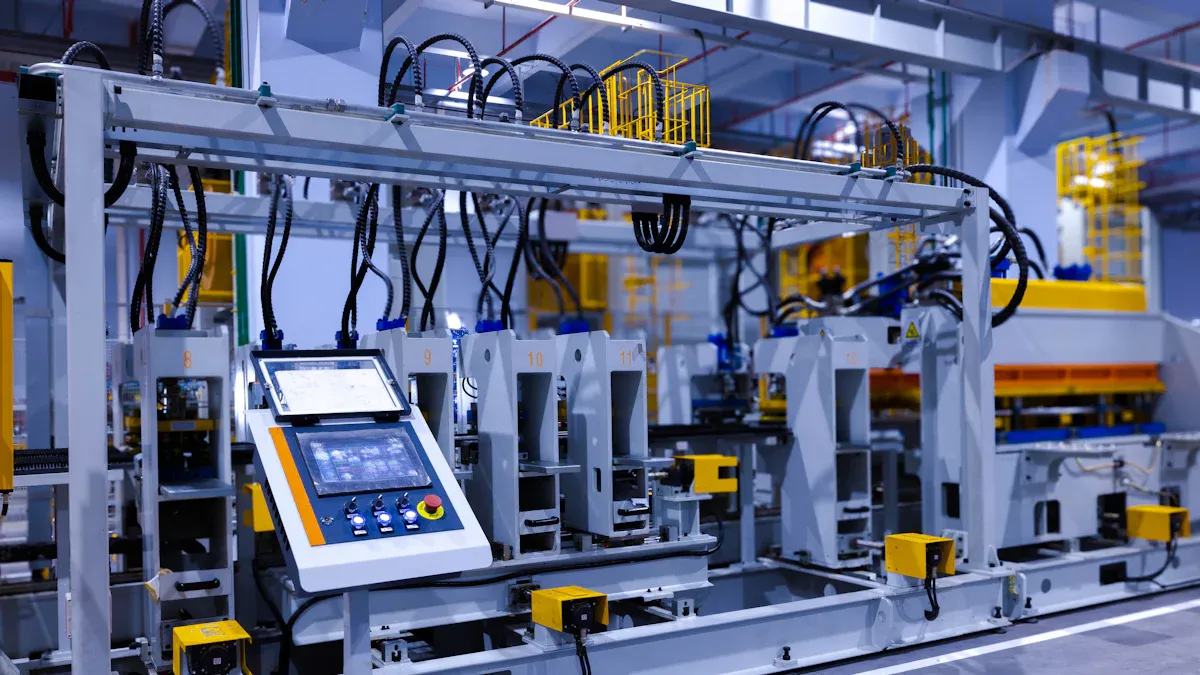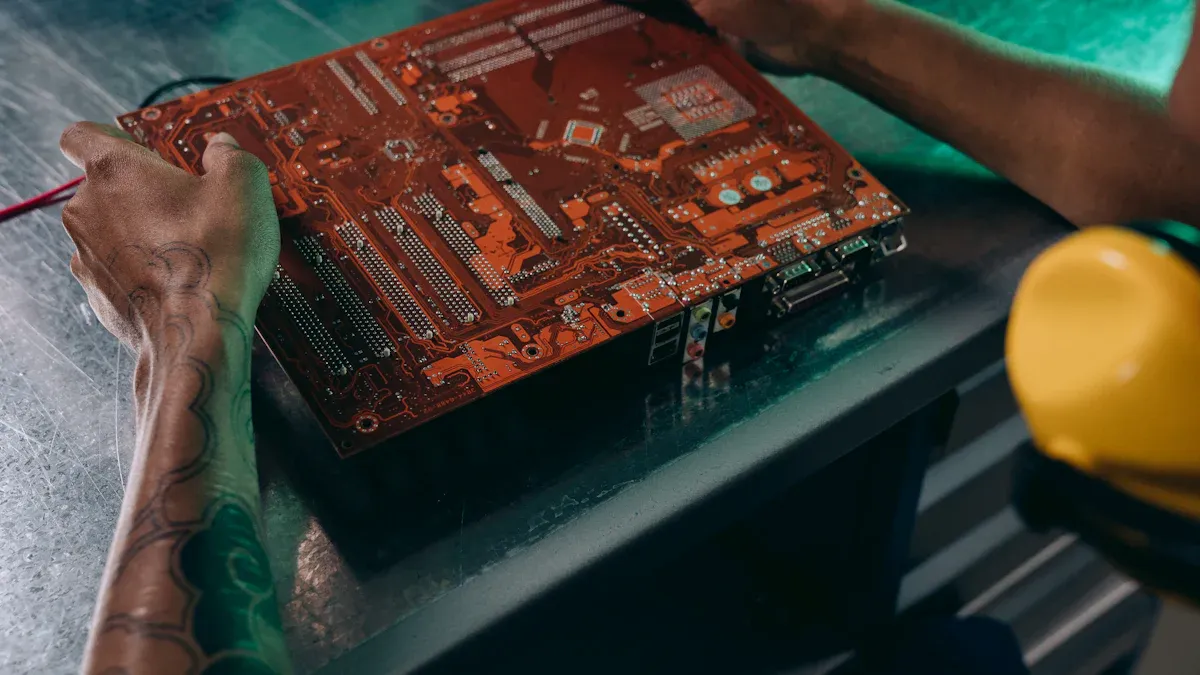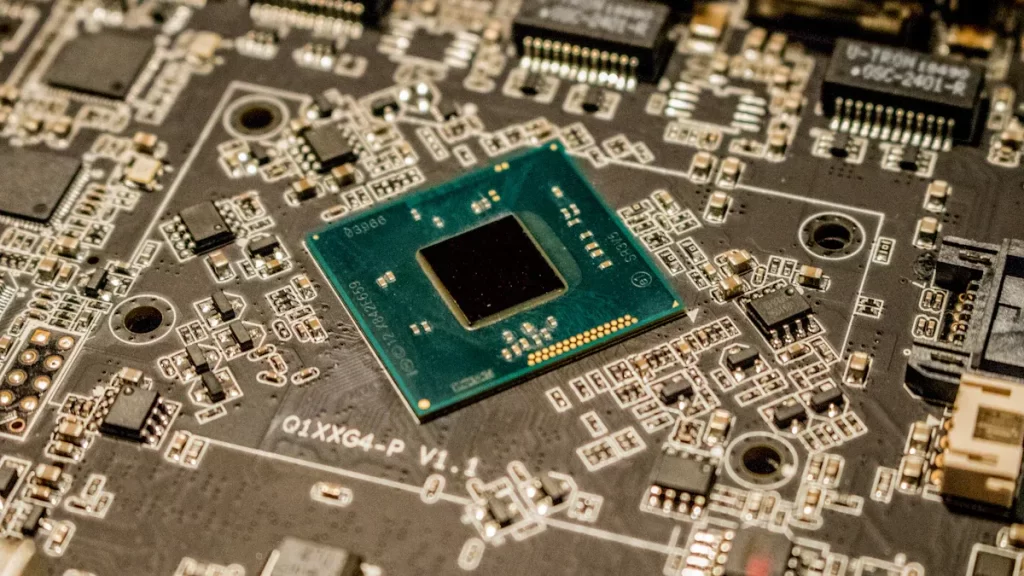
Creating top-quality aerospace grade industrial PCB assembly can be simple. Focus on key things like ITAR rules, reliability, and safety checks. These ensure your products meet aerospace and military regulations. A clear plan helps you meet these needs easily, removing extra problems. By focusing on accuracy and compliance, you can produce aerospace grade industrial PCB assemblies faster while maintaining high performance.
Aerospace work requires strict regulations. A solid plan leads to success in challenging situations.
Key Takeaways
Learn ITAR and DFARS rules to keep data safe. Following these rules avoids fines and is key for aerospace work.
Make a Technology Control Plan (TCP) to protect important items. This plan helps follow rules and keeps your business safe.
Use AS9100 standards to make sure aerospace PCBs work well. These rules help products handle tough conditions.
Do regular quality checks and tests to keep high standards. Inspections find problems early and keep products safe.
Use strong coding tools to protect military data in PCBs. This stops others from seeing private information.
ITAR and DFARS Compliance in Manufacturing
Understanding ITAR and DFARS Regulations
ITAR and DFARS are important for keeping the country safe. They control how defense items, data, and products are handled. ITAR focuses on managing the export and import of defense goods and information. DFARS ensures contractors follow cybersecurity rules when working with the DoD.
Following ITAR and DFARS rules is not a choice. Companies in aerospace, military, or defense must follow them. These rules protect sensitive data and stop unauthorized sharing. Breaking them can lead to big fines, lost contracts, and harm to your reputation.
Tip: Learn about the export licenses needed for ITAR. These licenses make sure only approved people get access to controlled items and data.
Steps to Achieve ITAR and DFARS Compliance
To meet ITAR and DFARS rules, follow these steps:
Check if you need a Technology Control Plan (TCP).
Find out if your work involves controlled items or data needing a TCP.Create a TCP using a template.
Add sections like Lab Info, TCP Type, and Export Control Details.Explain how you’ll secure your lab.
Share steps to keep controlled items and data safe in your facility.Protect sensitive info during talks.
Use methods to stop unauthorized people from hearing or seeing data.Train your team on ITAR and DFARS.
Teach employees the rules and their role in staying compliant.
By doing these steps, you can build a strong program that follows ITAR and DFARS rules.
Overcoming Common ITAR Compliance Challenges
Following ITAR rules can be hard, but smart strategies help. Here are some useful tips:
Strategy | Insight | Implication |
|---|---|---|
Plan for ITAR compliance | Know rules in different countries | Lowers risks of breaking rules and saves money |
Check where materials come from | Follow global regulations | Avoids costly mistakes and delays |
Take proactive steps | Saves money over time | Improves compliance and reduces financial risks |
Also, learn where your materials come from. This helps you follow global rules and avoid delays. Regular audits and training can save money and improve compliance.
Note: Keep up with changes to ITAR and DFARS rules. These rules change to handle new security challenges.
High-Reliability Aerospace Grade PCB Assembly

Standards and Certifications for Reliability
To meet aerospace needs, follow strict certifications for reliability. These certifications ensure PCBs work well in tough conditions. Two main standards are important in aerospace:
Standard | Description |
|---|---|
Aerospace PCB Design Standards | Requires strong, high-quality PCBs for aerospace use. They must last and work in extreme environments. |
AS9100 | Focuses on safety and quality. It ensures products last 15-20 years without failing. |
These standards focus on making durable and long-lasting PCBs. Aerospace PCBs must handle harsh conditions and still work properly. Using proven methods like good thermal systems helps meet these goals. By following these certifications, your products will meet aerospace reliability needs.
Tip: Always follow AS9100 rules to reduce risks and improve reliability.
Best Practices for Consistent Performance
To make reliable aerospace PCBs, follow careful steps. Research shows these practices help:
Place parts wisely to improve signals and reduce interference.
Route traces properly to avoid signal problems and share power evenly.
Design ground planes to lower interference and keep performance steady.
Manage heat well to stop overheating and protect parts.
Use simulation tools to check designs and improve reliability.
These steps help PCBs meet aerospace standards. For example, placing hot parts carefully avoids heat problems. Routing traces well prevents signal issues. These actions make products more reliable over time.
Study heat flow to place parts better.
Use tools to check signal strength and design quality.
Test thoroughly to ensure high standards.
Note: Reliable performance is key in aerospace. Even small failures can cause big problems.
Quality Control in Military and Aerospace Applications
Quality control is vital for aerospace PCB assembly. It ensures products meet strict military and aerospace standards. Inspections are key to keeping quality high. Important tests include:
Standard | Application | Testing Method |
|---|---|---|
IPC-6012 | Rigid PCBs for avionics systems | Automated Optical Inspection (AOI) |
MIL-PRF-31032 | Military communication systems | X-ray Inspection |
Quality checks start with inspecting materials to ensure they meet rules. During production, tests check for problems. Final inspections catch any issues before use. These steps ensure PCBs meet aerospace standards.
Tip: Regular checks and electrical tests keep quality high and prevent failures.
Designing for Extreme Environments

Material Selection for Harsh Conditions
Picking the right materials is very important for PCB assemblies. These materials must handle high heat, strong chemicals, and physical stress. Polyimide and ceramic substrates are great choices. They resist heat and last a long time. These materials help PCBs work well in aerospace and military uses.
Material features and how they are made affect reliability. Research from Advanced Materials and Manufacturing for Extreme Environments shows testing materials improves performance in tough conditions. For example, flame-retardant laminates stop heat damage. Chemical-resistant coatings protect circuits from harmful chemicals.
Source | Evidence Description |
|---|---|
Advanced Materials and Manufacturing for Extreme Environments | Explains how testing materials boosts performance in harsh conditions. |
Tip: Test materials to make sure they fit your needs and avoid problems.
Environmental Testing and Validation
Testing checks if PCB assemblies can survive tough conditions. Reliability tests find weak spots that might fail. Environmental tests include heat cycles, shaking tests, and moisture exposure. These tests copy real-world challenges and prove designs are durable.
Aging tests are also helpful. They expose PCBAs to stress over time to check reliability. Insights from PCBA Test: A Comprehensive Guide on PCB Assembly Testing stress the value of these tests for aerospace-grade assemblies.
Source | Evidence Description |
|---|---|
PCBA Test: A Comprehensive Guide on PCB Assembly Testing | Talks about aging tests that measure long-term reliability under stress. |
Note: Regular testing finds design issues early and keeps performance steady.
Design Strategies for Durability and Longevity
Good design makes PCB assemblies last longer and stay strong. Reinforcing structures stops damage from movement or shaking. Vibration damping keeps parts stable and protects solder joints. Coatings resist chemicals, keeping circuits safe. Heat-resistant materials protect parts from extreme temperatures.
Data shows these methods improve reliability in tough places. For example, vibration damping lowers stress on parts, keeping them secure. Chemical resistance stops corrosion, helping circuits last longer.
Design Strategy | Description |
|---|---|
Structural Reinforcement | Stops damage from movement and shaking, improving long-term use. |
Reduces stress from shaking, keeping parts stable and solder joints safe. | |
Chemical Resistance | Protects circuits from harmful chemicals, keeping them safe in tough conditions. |
Thermal Resistance | Shields parts from high heat, helping them work in extreme temperatures. |
Enhanced Reliability | Keeps performance steady in different environmental challenges, like moisture or rough terrain. |
Tip: Use these strategies in your designs to make them stronger and last longer.
Security Certification and Encryption Requirements
Important Security Certifications for Aerospace Use
Security certifications are crucial for keeping defense systems safe. They set strict rules for handling sensitive data and making secure systems. Key certifications include:
Certification | What It Ensures |
|---|---|
Protects military data by controlling its transfer. | |
NADCAP | Creates rules for electronics makers in defense. |
AS9100 | Focuses on quality for aviation, space, and defense. |
These certifications make sure military electronics are secure and high-quality. For example, ITAR keeps military data safe, and AS9100 ensures strong production methods. Following these certifications helps protect systems like navigation tools, communication devices, and space equipment.
Tip: Check certification rules often to keep up with changes in defense standards.
Adding Encryption to PCB Designs
Encryption keeps military data safe from hackers. To use encryption well, follow these methods:
Method Type | What It Does |
|---|---|
Hardware Acceleration | Uses special tools for fast encryption like AES and RSA. |
Secure Boot Mechanisms | Protects systems with secure startup and updates. |
Secure Memory Design | Keeps encryption keys safe using secure hardware. |
Tamper Resistance Techniques | Detects tampering with protective layers and sensors. |
Military systems need strong encryption hardware to block unauthorized access. For instance, military RF connectors safely share encryption keys, ensuring only approved users can access data. Updating encryption methods like TLS/SSL and IPsec helps fight new threats and improve security.
Note: Testing encryption systems is key to making sure they work well in defense systems.
Keeping Military Data Safe
Military data needs strong protection to stop leaks. Encryption and secure designs are vital for safety. For example:
Use custom encryption for specific defense needs.
Add tamper-proof designs to block physical attacks.
Update encryption systems to handle new threats.
Secure encryption hardware is also important for protecting data in communication tools and space systems. These systems face tough conditions, so they need to be both secure and durable. By adding encryption and safety features to your PCB designs, you can make defense systems more reliable.
Tip: Work with certified manufacturers to meet strict defense security rules.
Making aerospace PCB assembly easier starts with key focus areas. These include following ITAR rules, ensuring reliability, and adding security features. These steps help your products meet military and aerospace standards. They also keep performance high in important applications.
Using smart design and encryption methods makes assemblies strong and safe. This helps them work well in tough conditions. Combining compliance, reliability, and security gives clear advantages. For example:
Testing Type | Benefits |
|---|---|
Early compliance checks | Helps plan projects and meet rules from the beginning. |
Safety and certification tests | Makes sure PCBs follow UL rules and stay safe. |
Reliability and performance tests | Confirms PCBs work well in different situations. |
Full testing services | Covers many areas like chemical, electrical, and environmental tests to save time and money. |
A clear plan makes the process easier and less confusing. This ensures your aerospace PCB assembly meets top standards for quality and safety.
FAQ
What is ITAR compliance, and why is it important for PCB assembly?
ITAR compliance protects defense data and products from unauthorized access. It stops military technology from being shared or exported without approval. For aerospace PCB assembly, following ITAR rules ensures your products meet strict security standards.
Tip: Check if your project involves ITAR-controlled items to avoid fines.
How do you ensure PCB reliability in extreme environments?
Use heat-resistant materials and designs that reduce vibration. Test your PCBs to see if they handle tough conditions like heat, moisture, and stress. These steps improve reliability in harsh environments.
Note: Testing early helps save time and makes designs stronger.
What certifications are essential for aerospace-grade PCBs?
Important certifications include AS9100 for quality and ITAR for security. These certifications ensure aerospace PCBs meet safety and performance standards.
Certification | Purpose |
|---|---|
AS9100 | Ensures safety and quality |
ITAR | Protects sensitive information |
Why is encryption necessary in aerospace PCB design?
Encryption keeps military data safe from hackers. It allows only approved users to access important information. Adding tamper-proof designs and secure boot features makes PCBs harder to attack.
Tip: Update encryption methods often to block new threats.
How can you simplify aerospace PCB assembly?
Start by focusing on compliance, reliability, and security. Use clear plans and follow proven methods. Work with certified manufacturers to meet aerospace standards easily.
Reminder: Planning ahead makes production faster and less complicated.
See Also
The Significance of AS9100 Certified PCB Assembly in Aviation
Selecting an Aerospace PCB Producer for Budget-Friendly Solutions
Key Developments Influencing Industrial IoT PCB Assembly by 2025





